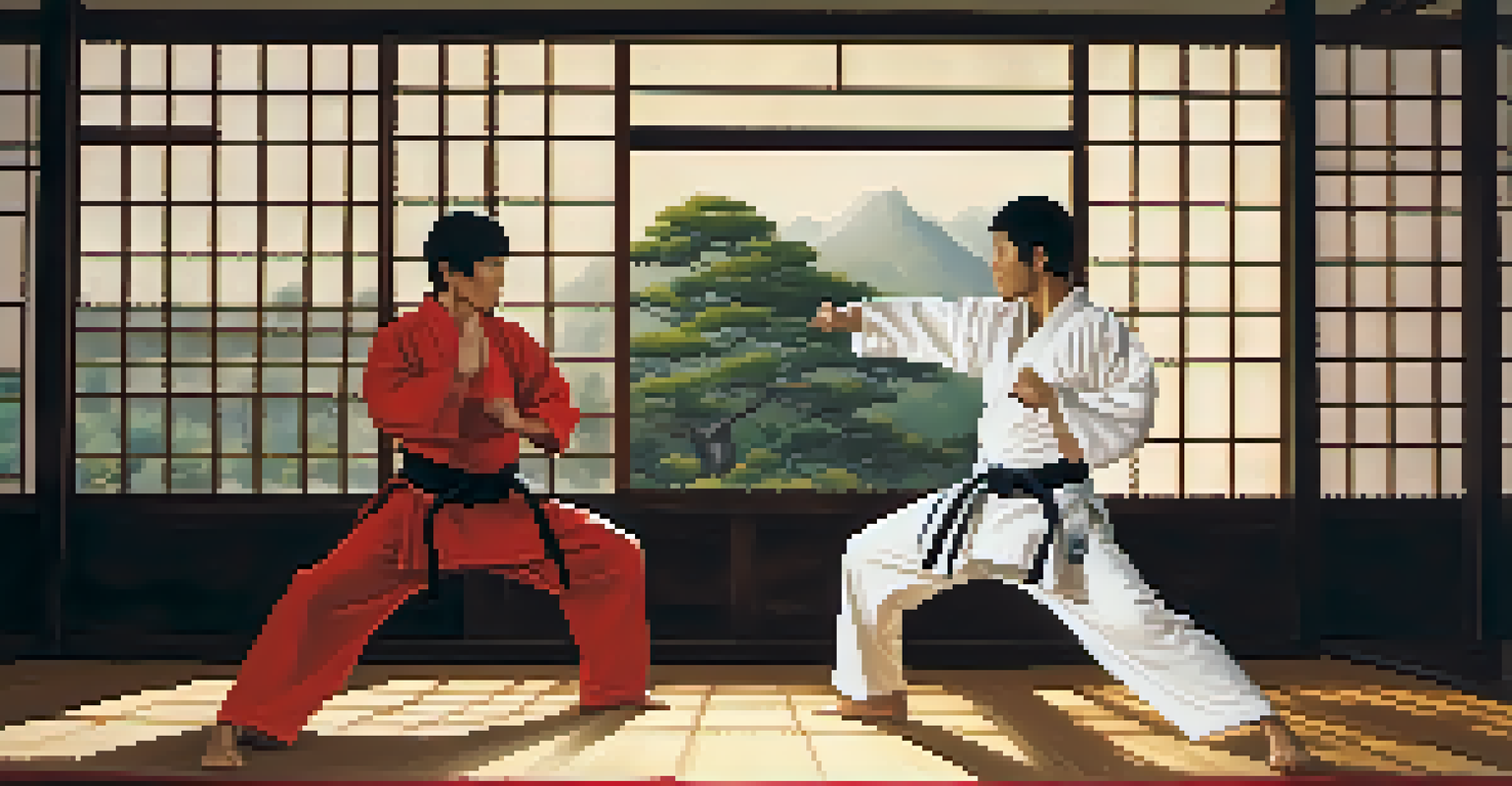De-escalation Techniques from Martial Arts for Personal Safety

Understanding De-escalation: What It Means for You
De-escalation refers to the process of reducing tension in a conflict situation. In personal safety, it’s about using effective strategies to avoid physical confrontations. Think of it as a way to navigate a potential storm calmly, preventing it from turning into a hurricane.
The greatest weapon against stress is our ability to choose one thought over another.
Martial arts provide valuable insights into de-escalation, emphasizing control, awareness, and communication. These principles can be applied not just in fighting but in everyday interactions. By understanding the dynamics of conflict, you can better manage potentially dangerous situations.
Ultimately, the goal is to foster a peaceful resolution. Just like a martial artist learns to read their opponent’s movements, you can learn to read social cues and respond appropriately, ensuring your safety while promoting harmony.
Active Listening: The First Step in De-escalation
Active listening is a powerful tool in any conflict resolution scenario. It involves fully concentrating, understanding, and responding thoughtfully to what the other person is saying. Imagine being in a heated argument; taking a moment to truly listen can change the course of the conversation.

In martial arts, practitioners often emphasize the importance of being aware of their surroundings and the emotions of others. By applying this to everyday situations, you can defuse tension simply by showing the other person that you value their perspective. This doesn’t mean you agree; it means you acknowledge their feelings.
De-escalation Reduces Conflict
De-escalation techniques help manage tension in conflicts, promoting peaceful resolutions.
Effective active listening can transform a potential conflict into a constructive dialogue. When someone feels heard, they are more likely to lower their defenses, allowing for a more peaceful exchange.
Body Language: Non-Verbal Cues that Matter
Body language plays a crucial role in communication, especially in tense situations. Just as martial artists are trained to read their opponent’s body language, you can learn to be aware of your own. Maintaining open and non-threatening posture can signal that you mean no harm.
Peace cannot be kept by force; it can only be achieved by understanding.
For instance, crossing your arms or avoiding eye contact may be perceived as defensive or aggressive. Instead, try to keep your arms relaxed and maintain soft eye contact. This invites a more open atmosphere, which can help de-escalate rising tensions.
Remember, your body often speaks louder than your words. Being mindful of your non-verbal cues can enhance your ability to engage in peaceful conflict resolution.
Verbal De-escalation: Choosing Your Words Wisely
The words we choose can either calm a situation or ignite further conflict. In martial arts, practitioners learn the importance of timing and delivery, which is equally relevant in verbal de-escalation. Using calm, clear language can help to diffuse anger and promote understanding.
For example, instead of saying, 'You need to calm down,' try framing it as, 'I can see this is upsetting for you.' This subtle shift in language can make a significant difference in how your message is received. It shows empathy, acknowledging the other person's feelings.
Active Listening Builds Connection
Practicing active listening can transform arguments into constructive dialogues by valuing others' perspectives.
Additionally, avoid using accusatory language or making assumptions. Instead, focus on 'I' statements that express how you feel about the situation. This approach can pave the way for more constructive dialogue and reduce hostility.
Creating Space: The Power of Distance
In martial arts, creating physical distance can be a vital tactic to prevent escalation. Similarly, in interpersonal conflicts, maintaining a safe space can help manage emotional intensity. Sometimes, stepping back—both physically and emotionally—can give everyone a moment to breathe.
When you feel tensions rising, consider taking a step back, both literally and figuratively. This can help to reduce the pressure of the moment and provide a clearer perspective. Just like a martial artist creates distance to assess the situation, you too can benefit from a little space.
This doesn’t mean retreating in fear; rather, it’s about empowering yourself to approach the situation with a level head. A calm mind is often the best tool for resolving conflicts effectively.
Empathy: Understanding Perspectives for Peace
Empathy is at the heart of effective de-escalation techniques. In martial arts, understanding your opponent’s perspective can give you a strategic edge. Similarly, in everyday conflicts, putting yourself in the other person’s shoes can foster compassion and understanding.
When you empathize with someone, it often diffuses their anger and opens the door to better communication. Imagine you're dealing with a frustrated coworker; recognizing their stress can lead to a more productive conversation rather than a confrontational one.
Empathy Fosters Understanding
Empathy allows you to connect with others' feelings, paving the way for more effective communication and conflict resolution.
By acknowledging their feelings and demonstrating understanding, you create a foundation for resolution. This empathetic approach can transform a potentially volatile situation into an opportunity for connection and resolution.
Practicing Mindfulness: Staying Grounded in Conflict
Mindfulness is about being present and aware of your thoughts and feelings without judgment. In martial arts, practitioners often use mindfulness to maintain focus during training and sparring. This same principle applies to handling interpersonal conflicts; staying grounded can help you respond rather than react.
When emotions run high, it’s easy to get swept away in the moment. For instance, taking a few deep breaths can center you and provide clarity. This practice allows you to approach the situation with a calm demeanor, making it easier to navigate toward resolution.

Incorporating mindfulness into your daily routine can enhance your ability to manage conflict. By staying present, you can make more thoughtful decisions and foster a peaceful environment.